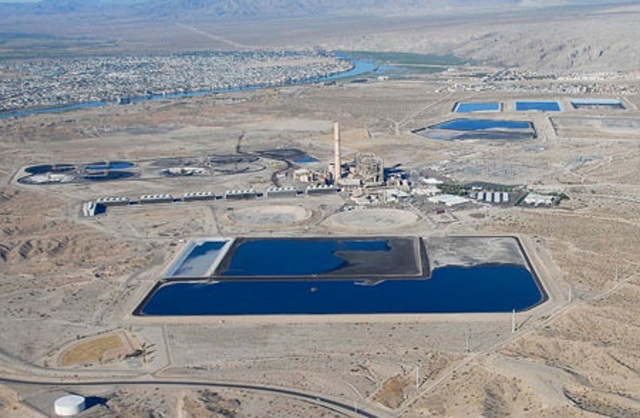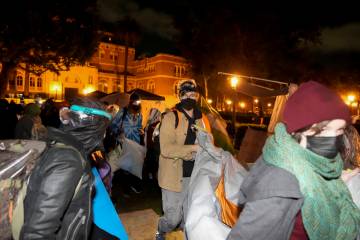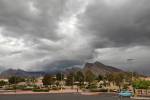Coal-fired Mohave Generating Station to be dismantled
A giant coal-fired power plant built nearly four decades ago in Laughlin will be dismantled, Southern California Edison said Wednesday.
The 1,580-megawatt Mohave Generating Station, which is 14 percent owned by NV Energy, has been moth-balled since December 2005. By decommissioning the plant, the owners indicated the power plant will not be returned to service.
“It’s a significant final decision on the part of the owners not to restore that plant ever again as a coal plant,” said Roger Clark, air and energy director for the Grand Canyon Trust. “It’s the first large Western coal plant to shut down.”
The Grand Canyon Trust, the Sierra Club and National Parks Conservation Association sued the owners of Mohave, because of haze over the Grand Canyon and other air pollution that was caused by the plant. The plant owners in 1999 agreed to a federal court order that required additional air pollution reduction at Mohave by December 2005.
When efforts to negotiate new coal and water contracts stalled, the owners stopped operations at Mohave rather than invest in new pollution-reduction equipment. However, the owners had considered selling Mohave to third parties that would restart the plant using natural gas, rather than coal, as fuel.
Shutting the plant down caused economic distress to the Navajo Nation, which supplied coal to Mohave through a slurry line.
The Indian tribe received $29 million in annual royalties from the Black Mesa Mine, which provided coal for Mohave. About 200 Navajo workers lost jobs at the mine. Some found work at the Kayenta Mine, which provides coal to the Navajo Generating Station near Page, Ariz., some retired and some are unemployed, said Navajo Nation spokesman George Hardeen.
“It’s jobs. That’s how the Navajo Nation looks at it,” he said.
The Hopi Tribe received $6 million in royalties from the mine, about one-third of its annual budget.
Southern California Edison, which owns 56 percent of Mohave and operated it, said Wednesday it would decommission the plant and remove generating equipment from the site. Edison expects to issue a request for proposals for the work, which will start late this year and take two years.
Laughlin Town Manager Jackie Brady said the community could get an economic boost during the decommissioning work, but Edison does not know how many workers will be needed for the project.
Edison said 345 workers at Mohave prior to its closing, although only 21 workers were still at the site.
Edison expects the decommissioning will cost $30 million, less the value of salvaged materials.
The California utility has not identified any contamination at the site that needs to be cleaned up, but Edison said it will take remedial action if appropriate, Alexander said.
Studies indicated that the site might be suitable for solar power production, but the company said it needs a more detailed assessment before reaching a final decision. The 2,470-acre site has transmission lines and a transmission switchyard that will remain. NV Energy referred a request for comment to Edison. Other owners are the Salt River Project and Los Angeles Department of Water and Power.
–
Contact reporter John G. Edwards at jedwards@reviewjournal.com or 702-383-0420.




























